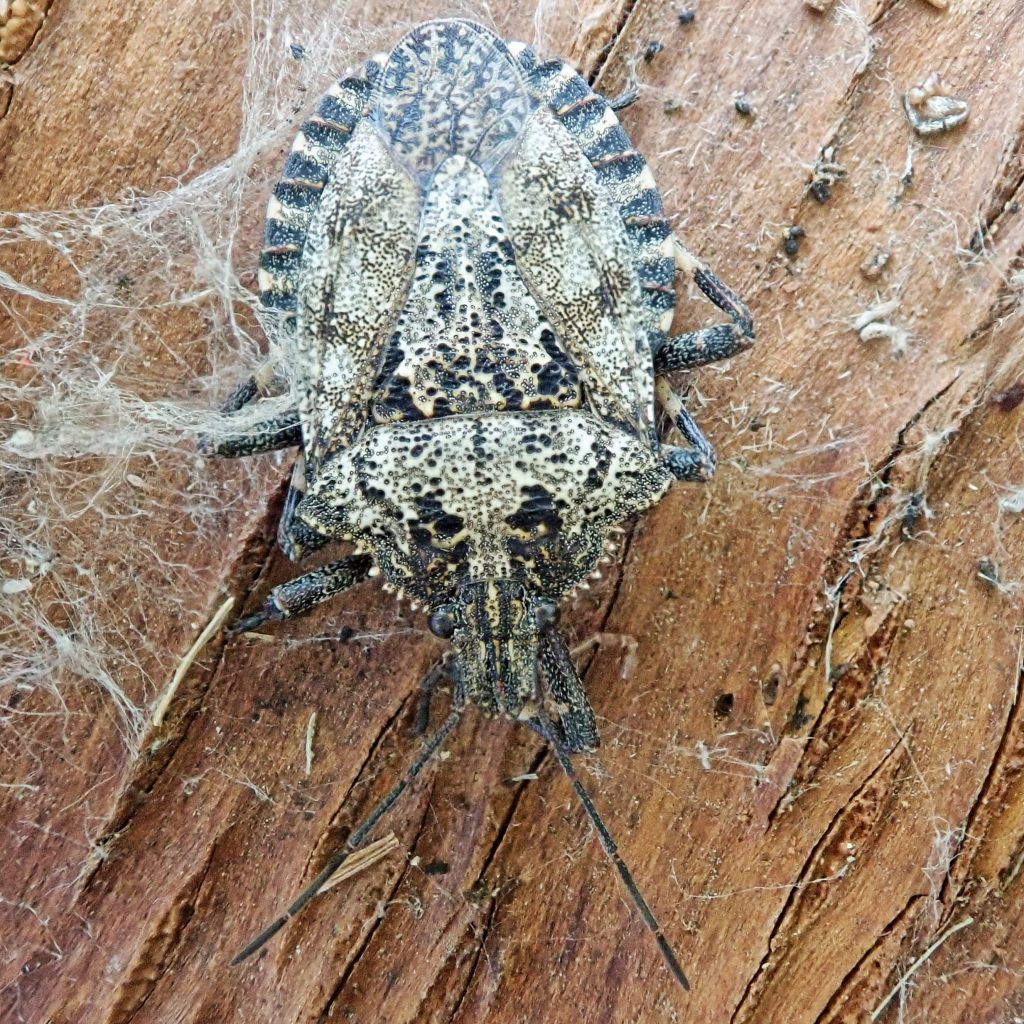
This stink bug (Pentatomidae) in the genus Brochymena (rough stink bugs) represents the end of an era, because it is the last profile I will be doing of a wild living organism that I found while working. I have Craig Sondergaard to thank for the idea of searching for interesting critters in tiny bits of habitat surrounded by urban and industrial sprawl, because of a rather offhand comment he made when I was showing him the ropes of medical transportation a half dozen years ago. I mentioned that there was often brief to extended periods of downtime, and that I’d rather leave home without food than sans a book, and he said that, besides the fact that he never left home without a book anyway, there were always micro habitats to be explored.
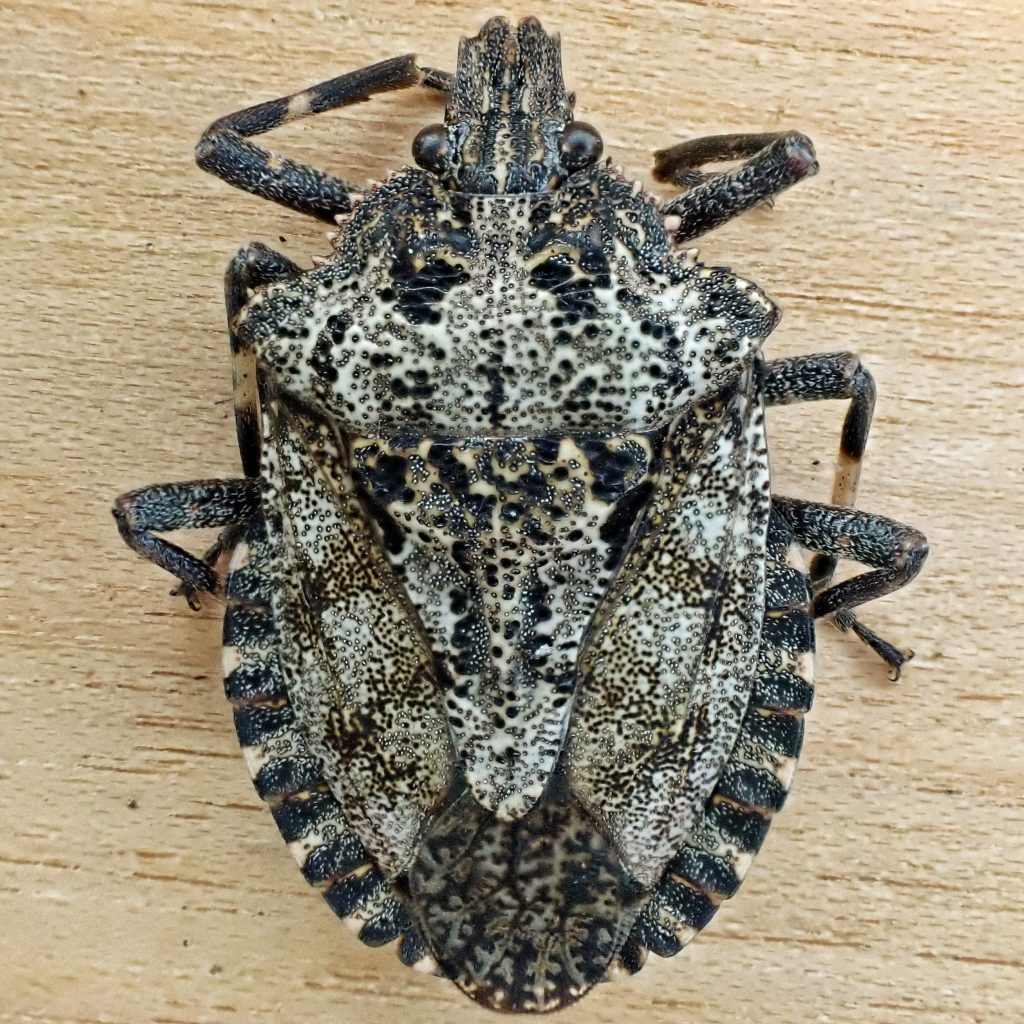
At that time I was mostly just interested in dragonflies and butterflies, so that Craig’s remark didn’t really resonate with me. But with the expansion of my interests that was prompted by the publishing of Merrill Peterson’s ‘Pacific Northwest Insects’, I took that observation to heart and began looking for bugs everywhere I went whilst making my rounds of medical facilities and residential areas. And I found them, though usually not in large numbers, probably due to the overall declines in insect numbers which are being documented.
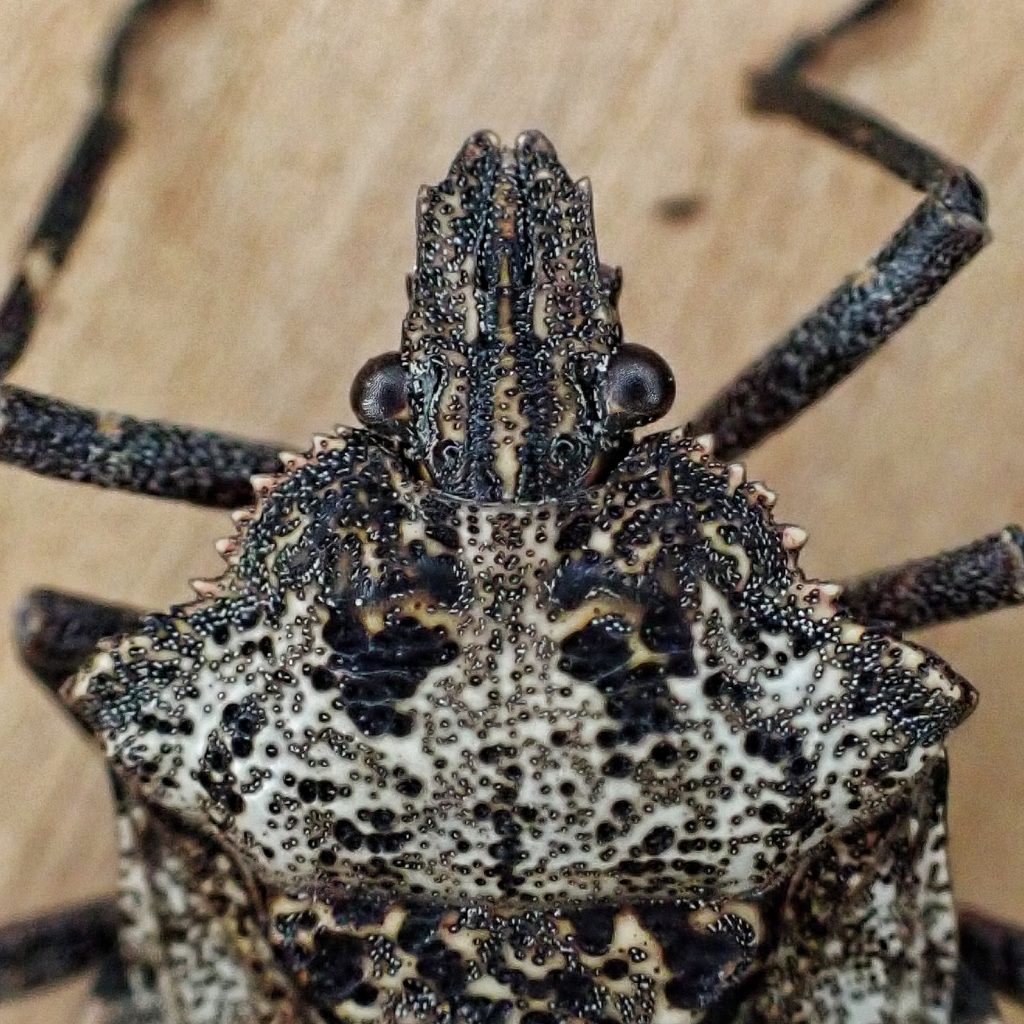
There were spectacular finds, like the Ceanothus Silkmoth on a pillar at the 505 or the Mathew’s Ghost Moth on the wall of an adult foster home, and the pedestrian joy of spiders, millipedes, centipedes, and woodlice under garbage on sidewalk margins, as well as many Syrphid flies and Hymenoptera on decorative plantings, jumping spiders on brick walls, sand wasps in medians, dragonflies hunting over city streets, Western Boxelder Bugs and Western Conifer Seed Bugs on street trees, etc, etc, etc. The point being that, if you keep looking wherever you go, you will find things you never knew were there.
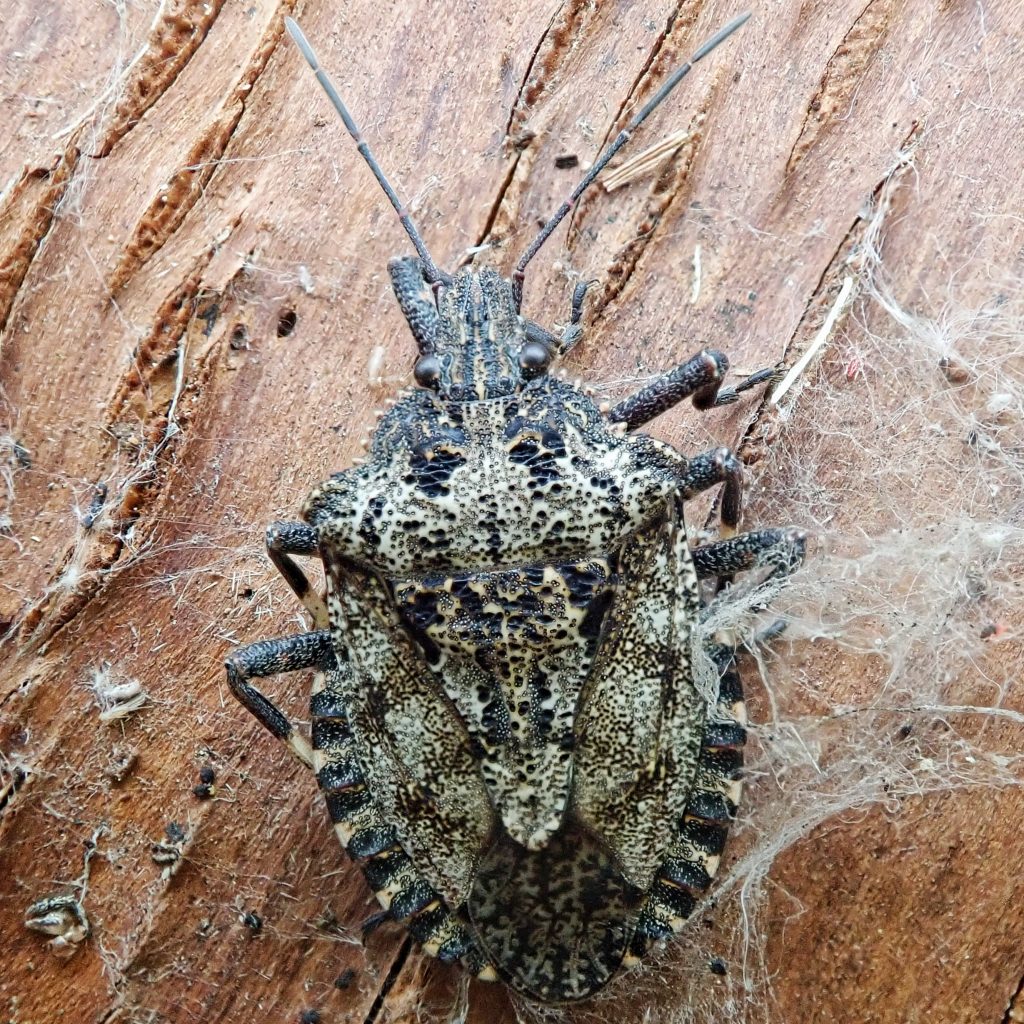
Having said that, it is somewhat surprising to me that, beyond a couple brief walkthroughs looking for pollinators, I’d never before explored the small group of dead and dying apple trees where I found this beautiful Brochymena affinis, especially since I frequently parked near them, as it was centrally located to a hospital and dozens of medical offices.Almost immediately I found the Mediterranean Seed Bugs and Rhyparochromus vulgaris that I have recently profiled, and then this wonderfully patterned and sculpted Brochymena affinis, which was definitely the bug of the week! Since it was under the bark on plain wood, the mottling and shape served to emphasize, rather than camouflage, its presence, and it was so conspicuous that I was surprised when I measured it to find that it was less than 3/4” long (17mm to be exact).
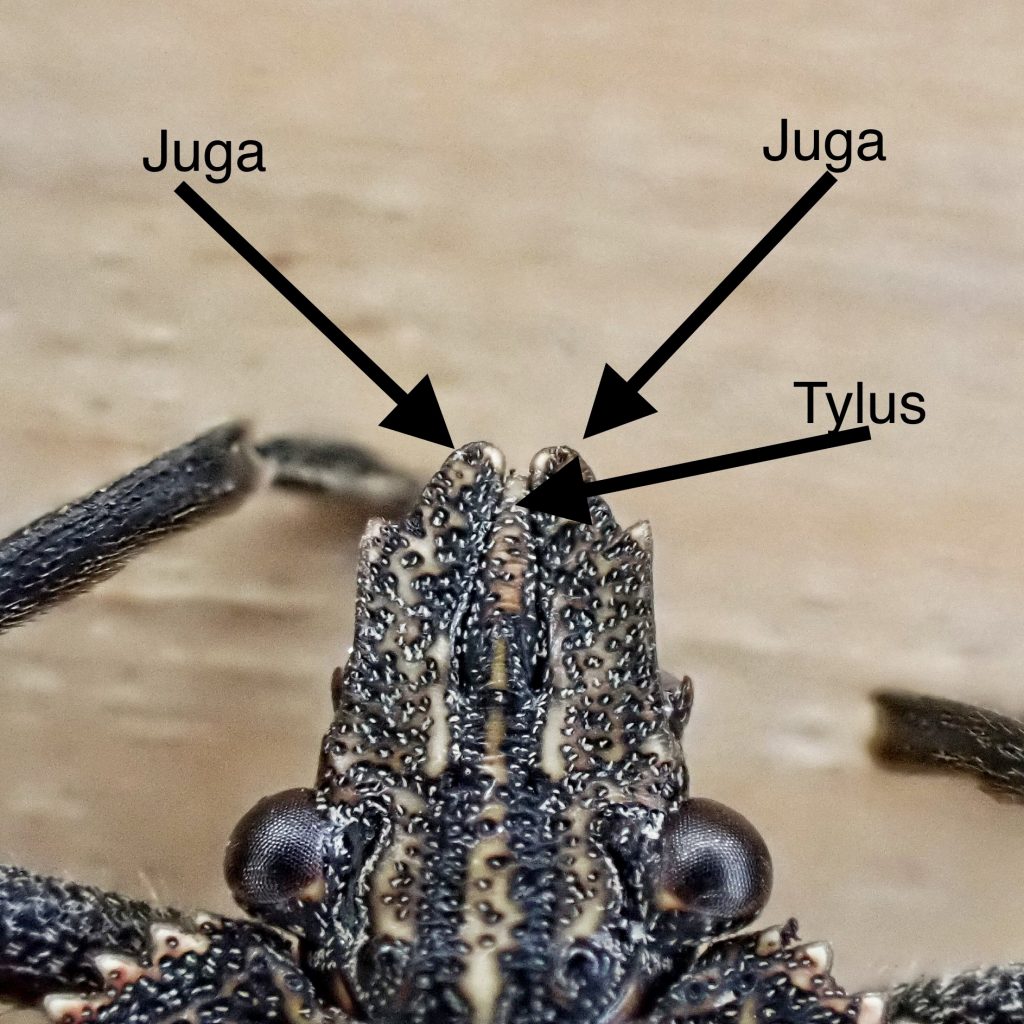
In my rush to identify this I made one of my more common mistakes, which was that I didn’t thoroughly read the key. Superficially it is almost identical to Brochymena sulcata and B. quadripustulata, but they have “juga distinctly longer than tylus” (see photo above). It seemed obvious to me that that described my specimen so, without reading the rest of the couplet, I began trying to differentiate between those two. But the ranges and bodily proportions of those two didn’t fit, and after a half hour or so of trying to pound those square pegs into round holes I went back to the key (Larivière;2012), where I found that the alternative was “Juga subequal to tylus, if exceeding it, then by less than their width at that point”, which clarified things greatly. On that side of the key the only taxa in our region is Brochymena affinis, which fits all of the other niggling little details as well. It would be nice to think that this latest mistake will, once and for all, convince me to proceed methodically through the identification process, but sadly, that’s probably not the case.
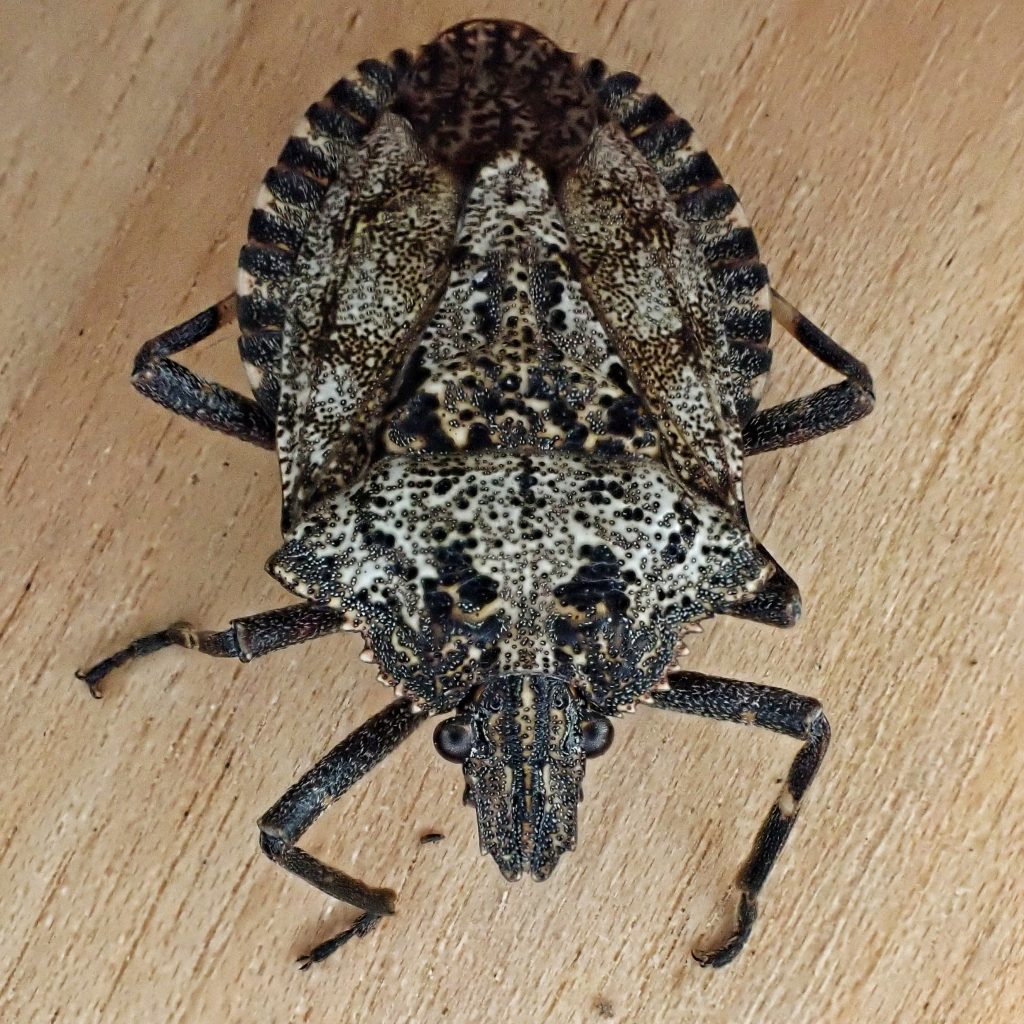
Description-Large (13-18mm long by 9-11mm wide), ovate stink bug, mottled with grey, black, brown, and white, with many irregular punctures and divots; pronotum pointed at the corners, and toothed on the lateral margins; juga not extending past the tylus by more than their width at that point; membrane with netlike patterns of light and dark; visible part of the abdomen checkered.
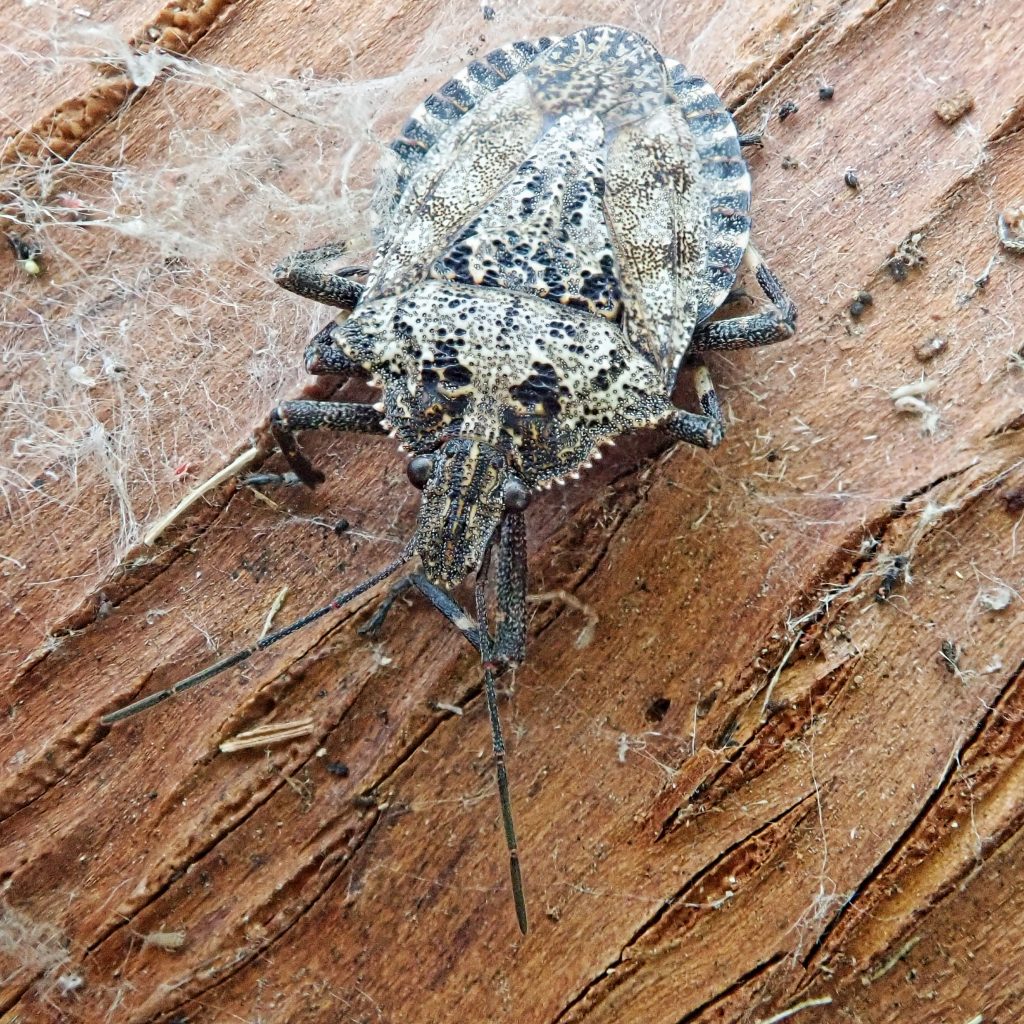
Similar species–Brochymena sulcata and B. quadripustulata are narrower and have juga much longer than tylus, and those of B. quadripustulata meet, or nearly so, at their tips.
Habitat-Forests and woodlands containing conifers in its natural state; has adapted to additional arboreal habitats in urban areas.
Range-Native to Western North America; probably region wide in appropriate habitat
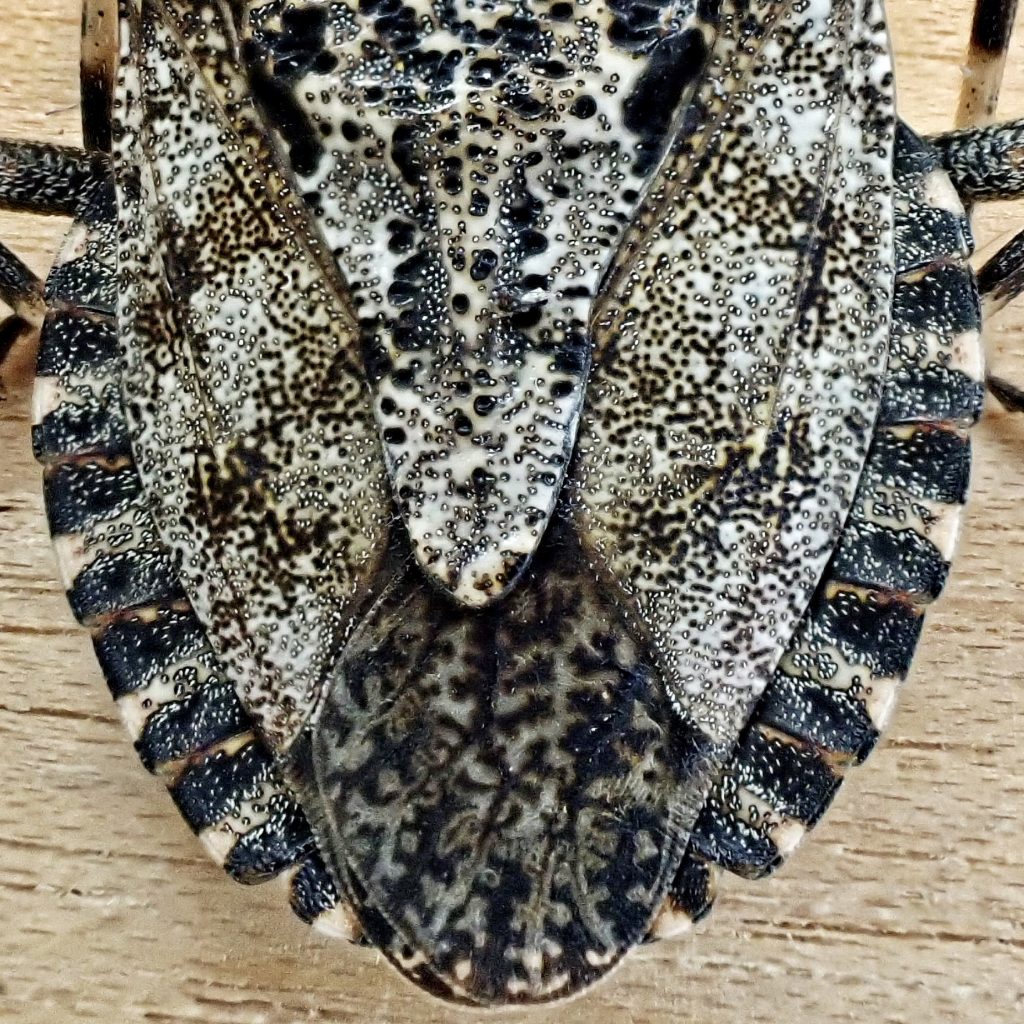
Eats– There are differences of opinion here; some say conifer needles and other plants, and some say aphids, caterpillars, and other insects; it seems likely they are omnivorous, primarily using their long proboscis to suck the juice from plants, and opportunistically preying on soft bodied insects.
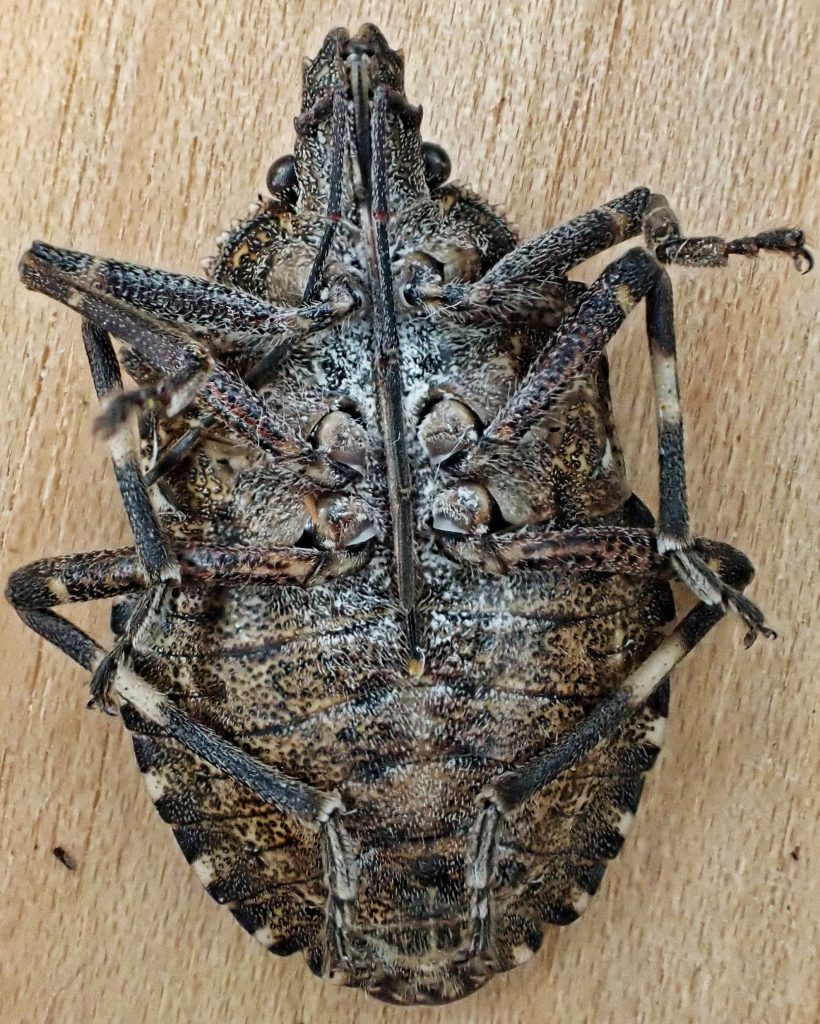
Eaten by-Primarily ants (though they can be deterred by a blast of their defense chemicals), tachinid flies, sand wasps, and other parasitic wasps among invertebrates; lizards and a wide variety of insectivorous birds don’t seem bothered by the eponymous ‘stink’ (possibly because in this case it is said to be similar to the scent of maraschino cherries), and vireos (Leatherman; 2014) seem particularly fond of them.
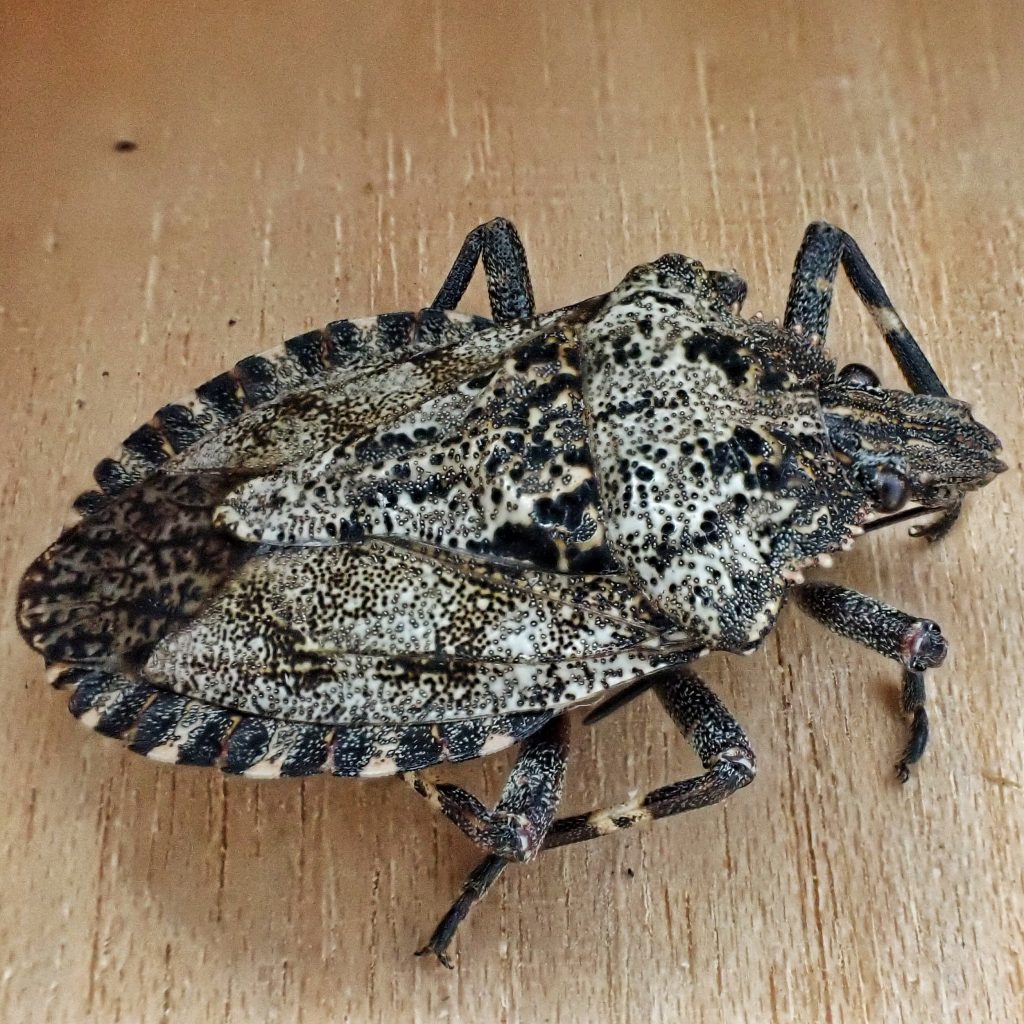
Adults active-Spring through fall; overwinters under bark and may be active on warm days.
Life cycle-Univoltine; breeds in spring; nymphal stage lasts until fall; adults overwinter, and then die after breeding.
Etymology of names–Brochymena is from the Greek words for ‘net membrane’, and probably refers to the pattern of the exposed wing membrane. The specific epithet affinis is from the Latin word for ‘related’, and probably refers to this species’ similarity to other Brochymena.
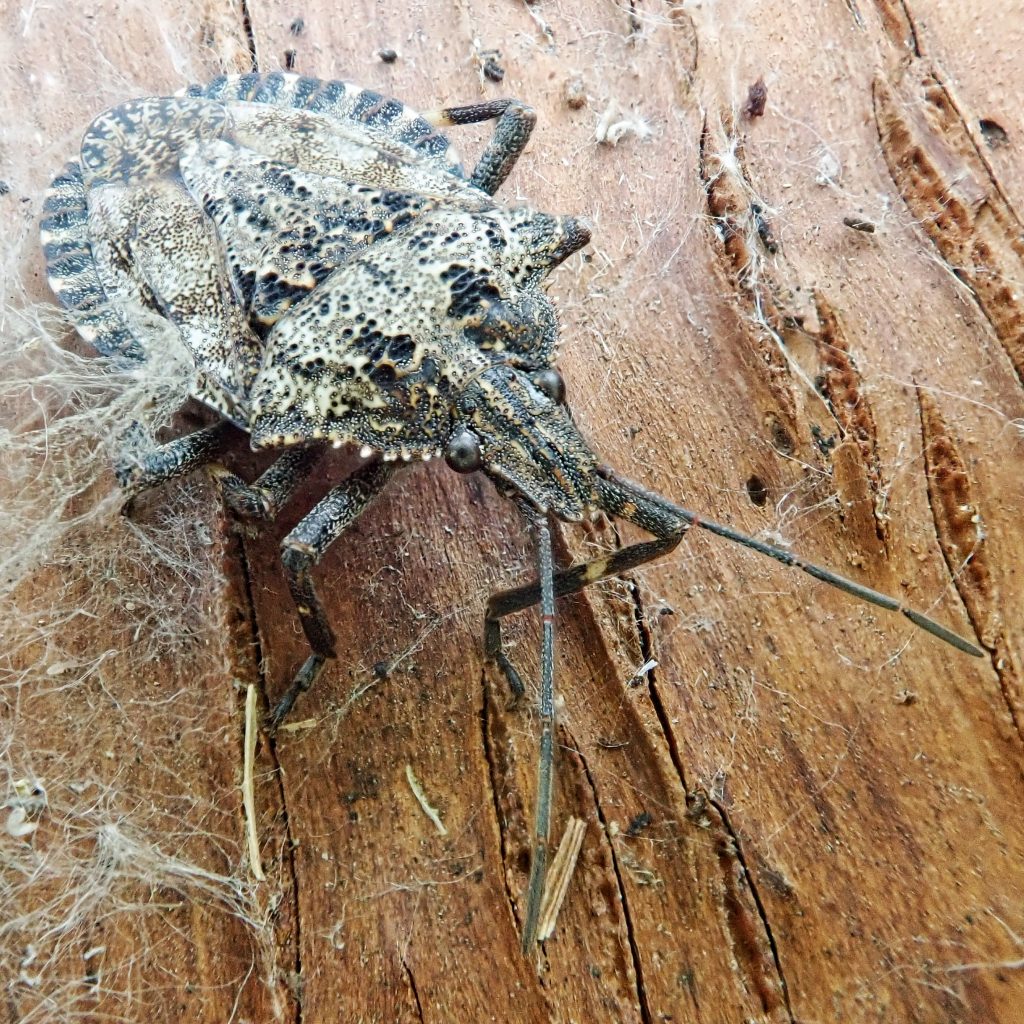
https://bugguide.net/node/view/234688
https://cobirds.org/JournalArchives/2010-2019/2014%20Vol%2048/CB_2014_48_3_Summer.pdf#page=55
https://www.odaguides.us/brochymena-rough-stink-bugs.html
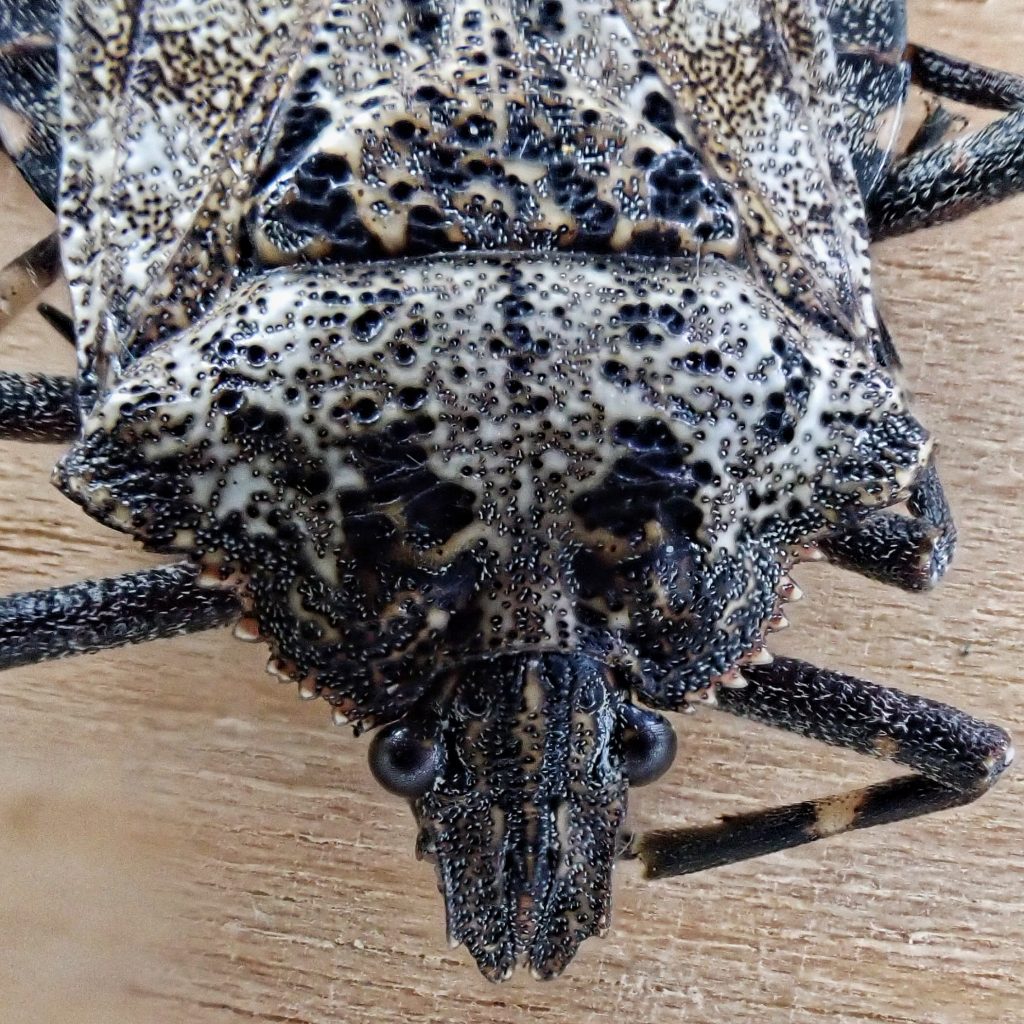
Thanks for the Beauty of them:):)
You’re welcome!
I am constantly fascinated by insects and how well they camoflage. Thank you for this informative post. What a beauty!
Thank you for your appreciation!
Super cool looking bug. Love your writing.
Thank you!
Hi Dan, Did your key happen to mention anything about setal tufts for B. affinis? I have a specimen I was comparing to an older one and my source (Joe Eger) says, “Brochymena affinis has a unique genital cup in that the posterior margin is produced into large lateral lobes which are quite setose.” My older specimen does have these and the one I’ve found today does not.
I don’t see anything in there about that, Cynthia. This should be a functional link
https://sci-hubtw.hkvisa.net/10.4039/entm124163fv